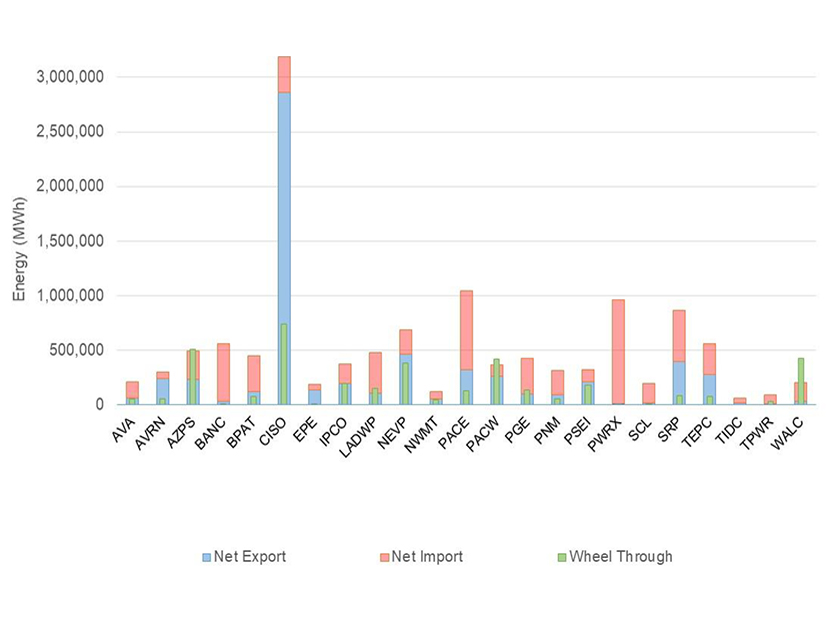
CAISO’s Western Energy Imbalance Market (WEIM) provided its 22 participants with $365.04 million in economic benefits from April to June this year, down 4% from the same period a year ago.
Cumulative benefits since the 2014 launch of the real-time market have hit $5.85 billion, according to CAISO’s second-quarter WEIM benefits report, released July 30.
June saw an extremely hot start to summer for most of the West. During that month, the solar-heavy CAISO area was the WEIM’s leading net exporter, sending more than 1.1 million MWh of energy to other market participants, up 7% from June 2023. In the WEIM, a net export represents the difference between total exports and total imports for a balancing authority area during a particular real-time interval.
“The transfers helped balance supply and demand when some of the WEIM entities were experiencing higher electricity usage due to a heat wave that saw temperatures climb 7 to 16 degrees above normal for several days across the West,” CAISO said in a press release accompanying the report.
The ISO also was the biggest net exporter over the full quarter at 2.86 million MWh, followed by PacifiCorp’s East and West BAAs’ combined exports of 584,555 MWh, NV Energy at 464,133 MWh and Salt River Project at 395,542 MWh.
The largest net importers were Powerex (965,287 MWh), the Balancing Authority of Northern California (BANC) (534,382 MWh) and SRP (473,319 MWh).
CAISO also was the location of the largest volume of wheel-through transfers during the quarter at 736,433 MWh, followed by Arizona Public Service (508,707 MWh), the Western Area Power Administration’s Desert Southwest Region (DSW) (430,880 MWh) and PacifiCorp-West (419,025 MWh). WEIM participants currently receive no financial benefits from facilitating wheel-throughs through the market, with only the source and sink of the transfers benefiting, although stakeholders have discussed the possibility of changing that in the future.
“More recently, subsequent to the June 30 closing of the second quarter, the real-time market also provided an important platform for energy trading during the record-setting heat wave in July that caused triple-digit temperatures across much of California and the West,” the ISO said. “Market participants provided similar assistance with robust energy transfers throughout the region.”
DSW, which joined the WEIM in 2023, reaped the greatest economic benefit during the second quarter, at $50.57 million. DSW this year withdrew from participating in the second phase of developing SPP’s Markets+ — a potential competitor to the WEIM — after finding it would see few benefits from participating in either Markets+ or CAISO’s Extended Day-Ahead Market. (See WAPA DSW Cites Lack of Benefits in Markets+ Withdrawal.)
BANC realized the second-largest share of benefits ($49.9 million), followed by CAISO ($36.02 million), NV Energy ($33.65 million) and the Los Angeles Department of Water and Power ($30.52 million).
CAISO’s report said WEIM operations in the third quarter also helped market participants avoid 55,921 metric tons of greenhouse gas emissions through reduced curtailments of emissions-free resources. The market has prevented over 1 million MT of emissions since 2015, the ISO estimates.


